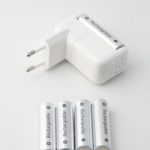Carpool Karaoke Microphone Instructions: A Comprehensive Guide
This comprehensive guide provides all the necessary information for using your Carpool Karaoke microphone. From connecting via Bluetooth or AUX cable to troubleshooting common issues, this guide will elevate your singing experience. Discover tips and techniques for maximizing the microphone’s potential.
The Carpool Karaoke Microphone transforms any space into a thrilling sing-along experience. It’s a universal microphone perfect for at-home karaoke nights and road trips. Recreate the fun and excitement of the wildly popular Carpool Karaoke experience, bringing the party wherever you go. This microphone is intended solely for passenger use, ensuring the driver’s safety.
Connect your mobile device via Bluetooth or AUX cable and sing your heart out! The microphone boasts various built-in modes and features, including echo mode, enhancing your vocal performance. It is available in over 15 colors and comes with a convenient carrying case for portability.
This guide will walk you through setting up and using your Carpool Karaoke Microphone, whether in your car or any other location. Unleash your inner star and enjoy countless hours of musical fun with this versatile and entertaining device. Get ready to turn any moment into a karaoke sensation!
Connecting via Bluetooth
To connect your Carpool Karaoke microphone via Bluetooth, begin by ensuring the microphone is powered on. A blinking light indicates that the link is in progress and that your microphone is ready to pair with your device. Access your device’s Bluetooth settings and search for available devices.
The microphone should appear as “K12” or a similar identifier in the list of available Bluetooth devices. Select the microphone to initiate the pairing process. If prompted, enter the pairing code (usually “0000”). Once successfully paired, the microphone will indicate a stable connection, and the blinking light will typically become solid.
Now, you can stream audio from your device to the microphone. Open your preferred music app and start playing a song. The audio will be transmitted to the microphone, allowing you to sing along. You can adjust the volume and echo settings on the microphone to customize your karaoke experience. Remember to keep the microphone and your device within a reasonable range for a stable Bluetooth connection.
Connecting via AUX Cable
Connecting your Carpool Karaoke microphone via an AUX cable offers a direct and reliable audio connection. Locate the AUX input on your Carpool Karaoke microphone and your audio device (smartphone, tablet, or car stereo). Typically, it’s a 3.5mm headphone jack.
Insert one end of the AUX cable into the AUX input on the microphone and the other end into the AUX output on your audio device. Ensure that both connections are secure for optimal audio transmission. Once connected, the audio from your device will be directly routed to the microphone.
Now, you can play music from your device, and it will be audible through the microphone’s speaker. Adjust the volume on both your device and the microphone to achieve the desired sound level. This method bypasses Bluetooth connectivity, offering a stable connection, especially in environments with potential Bluetooth interference. Additionally, you can still utilize the microphone’s echo and other built-in effects for an enhanced karaoke experience. Remember to disconnect the AUX cable when not in use to conserve battery life.
FM Transmitter Setup
The FM transmitter feature allows you to broadcast your Carpool Karaoke microphone’s audio through your car’s FM radio. First, identify an unused or weak FM radio frequency in your area. This is crucial for avoiding interference and ensuring a clear signal. Tune your car radio to this frequency.
Next, locate the FM transmitter setting on your Carpool Karaoke microphone. This may involve pressing a specific button or navigating through the microphone’s menu. Once activated, the microphone will display a frequency. Adjust the microphone’s frequency to match the frequency you selected on your car radio.
Ensure that both the microphone and the car radio are tuned to the exact same frequency. Now, play music from your connected device (via Bluetooth or AUX). The audio should now be transmitted through your car’s speakers. Adjust the volume on both the microphone and your car radio to achieve the desired sound level. If you experience static or interference, try selecting a different FM frequency. Keep the microphone within a reasonable range of the car radio for optimal signal strength.
Pairing the Microphone with a Speaker
To amplify your Carpool Karaoke microphone’s sound, pairing it with an external speaker is an excellent option, especially when not using it in a car. Before you begin, ensure that both your microphone and the speaker are sufficiently charged. Power on your external speaker and activate its Bluetooth pairing mode. This usually involves pressing a dedicated Bluetooth button or holding the power button for a few seconds until an indicator light starts flashing.
Next, power on your Carpool Karaoke microphone. Access the Bluetooth settings on the microphone, which may involve pressing a Bluetooth button or navigating through the menu. The microphone should begin searching for available Bluetooth devices. From the list of detected devices, select your external speaker.
The microphone and speaker should now initiate the pairing process. You may be prompted to confirm the pairing on either device. Once successfully paired, the indicator light on both the microphone and speaker should become solid, indicating a stable connection. Play a song from your connected device (via Bluetooth or AUX) to test the connection. Adjust the volume levels on both the microphone and the speaker to achieve the desired sound output.
Understanding the Microphone’s Controls
Familiarizing yourself with the controls on your Carpool Karaoke microphone is crucial for optimizing your singing experience. Typically, these microphones feature a user-friendly interface with several buttons and dials that manage various functions. The power button, usually located on the microphone’s body, turns the device on and off with a simple press.
Volume control is often managed through plus and minus buttons or a rotating dial, allowing you to adjust the microphone’s output level. An echo control lets you add reverb to your voice, creating a fuller sound. Some models have a music volume control, which adjusts the volume of the music playing through the microphone’s speaker.
Bluetooth controls enable you to pair the microphone with your smartphone or other devices. A play/pause button manages music playback. Other buttons might include options for switching between different modes, such as FM transmitter mode or AUX input mode. Some advanced models even have buttons for adjusting treble and bass levels. Understanding these controls will empower you to fine-tune your sound.
Adjusting Volume and Echo Settings
Mastering the volume and echo settings on your Carpool Karaoke microphone significantly enhances your performance. Start by adjusting the microphone volume to a comfortable level, ensuring your voice is clear without distortion. Use the volume control buttons or dial, incrementally increasing or decreasing the level until you find the sweet spot.
Experiment with the echo setting to add depth and richness to your voice. A slight echo can make your vocals sound fuller, while too much can create an overwhelming reverb effect. Adjust the echo control gradually, listening carefully to how it affects your sound. The ideal echo level depends on your preference and the acoustics of your environment.
Some microphones have separate volume controls for the music and your voice, allowing you to balance the mix perfectly. If your microphone features treble and bass adjustments, experiment with them to fine-tune the tone of your voice. Remember to test different settings with various songs to find what works best for your vocal style.
Troubleshooting Common Issues: No Sound
Encountering a “no sound” issue with your Carpool Karaoke microphone can be frustrating, but it’s often easily resolved. First, ensure the microphone is powered on and the batteries are adequately charged. A low battery is a common culprit. If using a wired connection, check that the cable is securely plugged into both the microphone and your device. For Bluetooth connections, verify that the microphone is properly paired with your device and that the Bluetooth connection is stable.
Confirm that the volume on both the microphone and your connected device is turned up. It’s possible that one or both are muted or set too low to hear anything. If you’re using an FM transmitter, double-check that the microphone’s frequency matches your car radio’s frequency.
If you’ve tried these steps and still have no sound, try restarting both the microphone and your device. In some cases, a simple restart can resolve software glitches that may be interfering with the audio output. As a last resort, consult the microphone’s user manual or the manufacturer’s website for specific troubleshooting tips.
Battery Replacement
To ensure uninterrupted karaoke fun, knowing how to replace the batteries in your Carpool Karaoke microphone is essential. Typically, these microphones use AA batteries, but always refer to your specific model’s manual for confirmation. To begin, locate the battery compartment, usually found on the handle or base of the microphone.
Use a small screwdriver if necessary to open the compartment. Remove the old batteries, noting the correct polarity (+ and -) as indicated inside the compartment. Insert new batteries, ensuring they are aligned according to the polarity markings. Securely close the battery compartment door, making sure it clicks into place.
After replacing the batteries, test the microphone to ensure it powers on and functions correctly. If the microphone still doesn’t work, double-check the battery polarity and ensure the batteries are fresh. It’s a good practice to keep spare batteries on hand, especially during long car rides or karaoke sessions. Remember to dispose of used batteries responsibly, following local recycling guidelines.
Using the Microphone Without a Car
The Carpool Karaoke microphone isn’t just for car rides! It’s a versatile device that can transform any space into a karaoke stage. To use it at home, first ensure the microphone is charged or has fresh batteries. Connect your mobile device via Bluetooth or AUX cable to the microphone.
Next, pair the microphone with a speaker for amplified sound. Many Bluetooth speakers are compatible, allowing you to blast your favorite tunes. Open your preferred music app and select a song to sing along to. Adjust the microphone volume and echo settings to your liking for the perfect karaoke experience;
You can also use the microphone for parties, gatherings, or even solo practice sessions. Its portability and ease of use make it a great entertainment option anywhere. Experiment with different locations and sound setups to create the ultimate karaoke atmosphere. Remember to respect noise levels and be mindful of your surroundings when using the microphone in public or residential areas.
Safety Precautions
When using the Carpool Karaoke microphone, safety should always be a priority. The Singing Machine Carpool Karaoke Mic is intended solely for use by passengers, and should never be used by the driver of any motor vehicle, as distracted driving can lead to accidents.
Ensure that the volume level is appropriate and doesn’t interfere with the driver’s ability to hear surrounding traffic and emergency vehicles. Avoid excessive singing or shouting that could be distracting. Secure the microphone and any connected devices to prevent them from becoming projectiles in the event of a sudden stop or collision.
When using the microphone outside of a vehicle, be mindful of your surroundings and avoid using it in areas where it could create a hazard or disturbance. Keep the microphone away from water and other liquids to prevent damage or electrical shock. Always supervise children when they are using the microphone, and ensure they understand the importance of using it responsibly. Store the microphone in a safe place when not in use to prevent damage or misuse.




